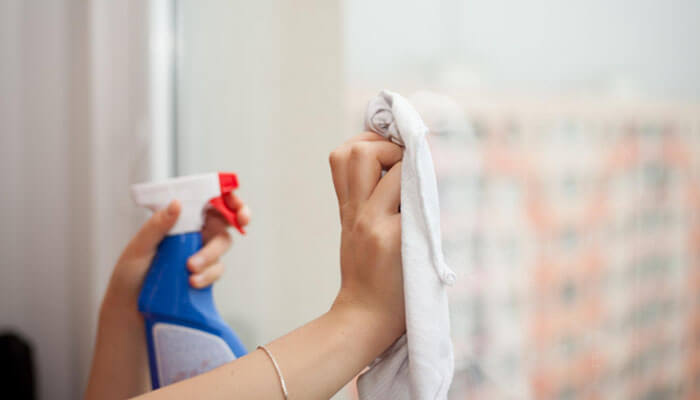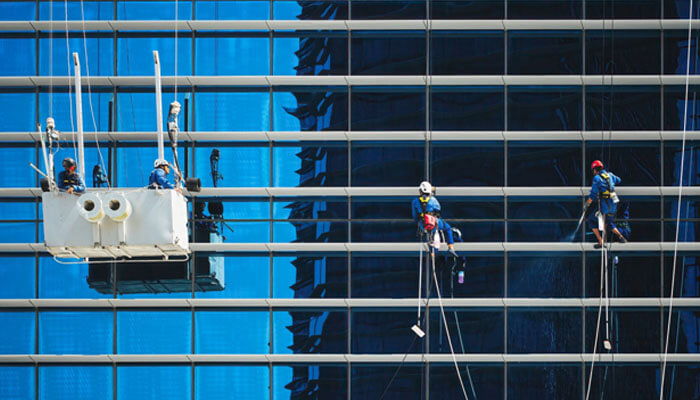Maintaining hygiene standards is essential for restaurants since it has a direct impact on food safety, customer satisfaction, and keeping in line with health regulations. This comprehensive guide will trace the major elements of commercial cleaning for restaurants, offering practical tips and best practices for creating a clean, safe, and inviting dining environment.
Importance of Restaurant Hygiene
A clean restaurant is not just an aesthetic thing but a serious measure of food safety and consumer confidence. Incorporating commercial cleaning for restaurants can prevent food poisoning, uphold a good name, and adhere to health department standards. Professional commercial cleaning for restaurants ensures that the consumers dine in a risk-free, fun-filled environment through effective and thorough cleaning measures.
Focus Areas of Restaurant Cleaning
1. Kitchen Hygiene
The heart of every restaurant is its kitchen. It is the core area where food safety is at a premium. Here are some general cleaning practices for the kitchen area:
a. Clean and sanitize all food preparation surfaces before and after use
b. Maintain regular schedules for the cleaning and care of kitchen equipment, including ovens, grills, and refrigerators
c. Utilize a color-coded system for cutting boards and utensils to prevent cross-contamination
d. Schedule frequent cleaning and sanitizing of floors, walls, and ceilings
e. Properly clean and store dishes, utensils, and cookware.
2. Dining Area Maintenance
Given that people spend most of their time in the dining area, maintenance here will play a significant role in giving a good impression:
a. Clean and sanitize tables, chairs, and booths after every use
b. Vacuum or sweep and mop the floors regularly
c. Clean windows, mirrors, and other glass surfaces
d. Dust and clean light fixtures, ceiling fans, and other overhead items
e. All condiment containers, menus, and other stuff on the table tops should be cleaned.
3. Cleaning Toilets
Restrooms are an area that should invariably impact customer satisfaction and general hygiene. It requires:
a. Frequently clean toilets, sinks, and mirrors
b. Soap, paper towels, and toilet paper should be restocked frequently
c. Door handles, stall locks, and other high-touch surfaces should be cleaned and disinfected.
d. Ventilation should be proper, and any odor issued promptly addressed
e. Waste should be managed properly by regularly emptying trash bins.
4. Bar and Beverage Areas
For those restaurants with bars, cleanliness is a must:
a. Clean and sanitize bar surfaces, including countertops and stools
b. Clean glassware and bar utensils thoroughly
c. Regularly clean and service ice machines and drink dispensers
d. Store and handle beverages and garnishes properly
Establishing Practical Cleaning Protocols
1. Establish a Detailed Cleaning Schedule
Create a detailed commercial cleaning schedule that outlines daily, weekly, and monthly tasks for all areas of the restaurant. Assign responsibilities to specific staff members and ensure accountability through regular inspections and checklists.
2. Train Staff on Proper Cleaning Techniques
Provide thorough training to all employees on proper commercial cleaning for restaurants and sanitization techniques. This should include:
a. Proper use of cleaning chemicals and equipment
b. Correct procedures for cleaning different surfaces and areas
c. Understanding the principle of cross-contamination prevention
d. Standard for hand hygiene and personal cleanliness
3. Using Correct Cleaning Agents and Sanitary Tools
Commercial-grade, food-grade cleaning agents and sanitation tools of high quality should be purchased. Educate the employees on how to use them appropriately and safely.
4. Hand Hygiene
Proper hand hygiene is very important for preventing foodborne diseases. There must be a proper hand hygiene program through which:
a. Install handwashing stations at key points
b. Hand sanitizer dispensers installed in other areas of the restaurant
c. Train employees on proper hand hygiene and when to use it
d. Regulation on glove use for food contact.
5. Pest Control Control
Establish an IPM system to avoid pest infestation:
a. Defend your buildings from pests by sealing entry points
b. Practice proper food storage
c. Monitor frequently for signs of pest activity
d. Consider contracting a professional pest control service to keep preventative measures ongoing.
6. Compliance with Health Regulations
Understand your local health department’s requirements and meet the minimum standards of cleaning. Regularly review and update the cleaning program based on emerging legislation or best practices of the business.
Applying Technology to Better Cleaning Management
Explore using electronic tools and software that help with cleaning management:
1. Leverage checklist and task management apps to track the cleaning process
2. Install IoT sensors that sense cleanliness in spots where dirt usually likes to linger, such as high-traffic facilities
3. Use data analytics to spot trends and schedule cleanings appropriately
The Commercial Cleaning Services
Restaurant staff can handle daily cleans, but consider contracting with a professional commercial cleaning for restaurants.
-
- Regular deep cleans and sanitizes
- Specialized cleans, like hood and vent
- Emergency cleanups after an accident
Communicating Cleanliness to Customers
Make your cleanliness efforts visible to your customers:
-
- Post health inspection scores so customers can see
- Implement visible cleaning practices during operating hours
- Train staff to communicate cleanliness standards to inquiring customers
Conclusion
A restaurant’s high standards of hygiene cannot be maintained without commitment and proper orientation toward such a service. Only through comprehensive cleaning protocols, strict compliance with health regulations, use of modern technology, and hiring professional services can restaurants make an eating place safe, clean, and inviting to customers. Above all, a clean restaurant not only guarantees hygienic food but also improves the whole dining experience, thus providing higher customer satisfaction and loyalty.



